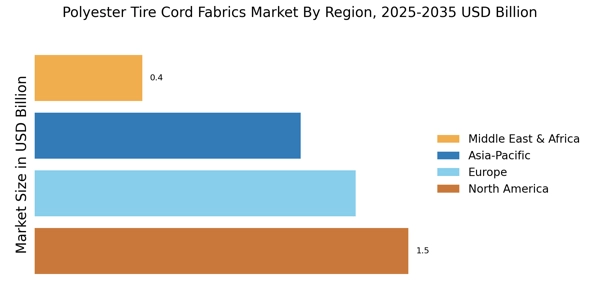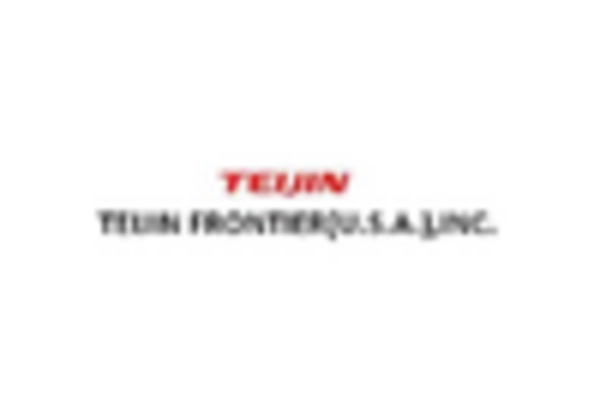Growth in the Automotive Aftermarket
The expansion of the automotive aftermarket is emerging as a significant driver for the Polyester Tire Cord Fabrics Market. As vehicle ownership continues to rise, the demand for replacement tires is also increasing. This trend is particularly pronounced in regions with a growing middle class, where vehicle maintenance and upgrades are becoming more common. Data indicates that the global automotive aftermarket is projected to reach a valuation of over 1 trillion USD by 2027, which could lead to heightened demand for polyester tire cord fabrics used in replacement tires. This growth presents a substantial opportunity for manufacturers to cater to the aftermarket segment, thereby enhancing their market presence and profitability.
Rising Demand for Fuel-Efficient Vehicles
The increasing emphasis on fuel efficiency in the automotive sector appears to be a pivotal driver for the Polyester Tire Cord Fabrics Market. As manufacturers strive to produce lighter vehicles, the demand for high-performance tire cord fabrics, particularly polyester, is likely to surge. Polyester tire cords are known for their lightweight properties, which contribute to reduced rolling resistance and improved fuel economy. According to recent data, the automotive industry is projected to grow at a compound annual growth rate of approximately 4.5% over the next few years, further bolstering the need for advanced tire materials. This trend indicates a robust market potential for polyester tire cord fabrics, as they align with the industry's shift towards sustainability and efficiency.
Expansion of Electric Vehicle Infrastructure
The ongoing expansion of electric vehicle (EV) infrastructure is poised to impact the Polyester Tire Cord Fabrics Market positively. As the adoption of electric vehicles accelerates, there is a corresponding need for specialized tires that can accommodate the unique performance requirements of EVs. Polyester tire cords, known for their strength and flexibility, are likely to be favored in the production of tires designed for electric vehicles. Market analysis indicates that the EV market is expected to grow at a compound annual growth rate of over 20% in the coming years, which could significantly boost the demand for polyester tire cord fabrics. This trend suggests a promising future for manufacturers who can adapt to the evolving needs of the automotive industry.
Increasing Focus on Environmental Sustainability
The heightened awareness regarding environmental sustainability is likely to drive the Polyester Tire Cord Fabrics Market. As consumers and manufacturers alike prioritize eco-friendly practices, the demand for sustainable materials in tire production is on the rise. Polyester, being recyclable and less energy-intensive to produce compared to other materials, aligns well with these sustainability goals. Recent studies suggest that the use of recycled polyester in tire manufacturing could reduce carbon emissions by approximately 30%. This shift towards sustainable practices not only meets consumer expectations but also positions manufacturers favorably in a competitive market, potentially leading to increased adoption of polyester tire cord fabrics.
Technological Advancements in Tire Manufacturing
Technological innovations in tire manufacturing processes are likely to significantly influence the Polyester Tire Cord Fabrics Market. The integration of advanced manufacturing techniques, such as automated weaving and enhanced coating technologies, has the potential to improve the performance characteristics of polyester tire cords. These advancements not only enhance the durability and strength of the fabrics but also optimize production efficiency. Recent statistics suggest that the adoption of such technologies could lead to a reduction in production costs by up to 15%, making polyester tire cords more competitive in the market. As manufacturers increasingly adopt these technologies, the demand for high-quality polyester tire cord fabrics is expected to rise, reflecting a positive outlook for the industry.


















Leave a Comment